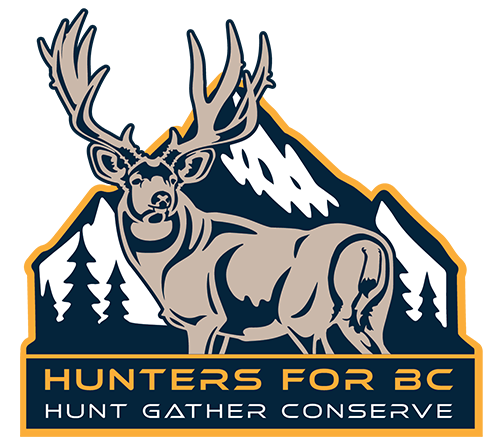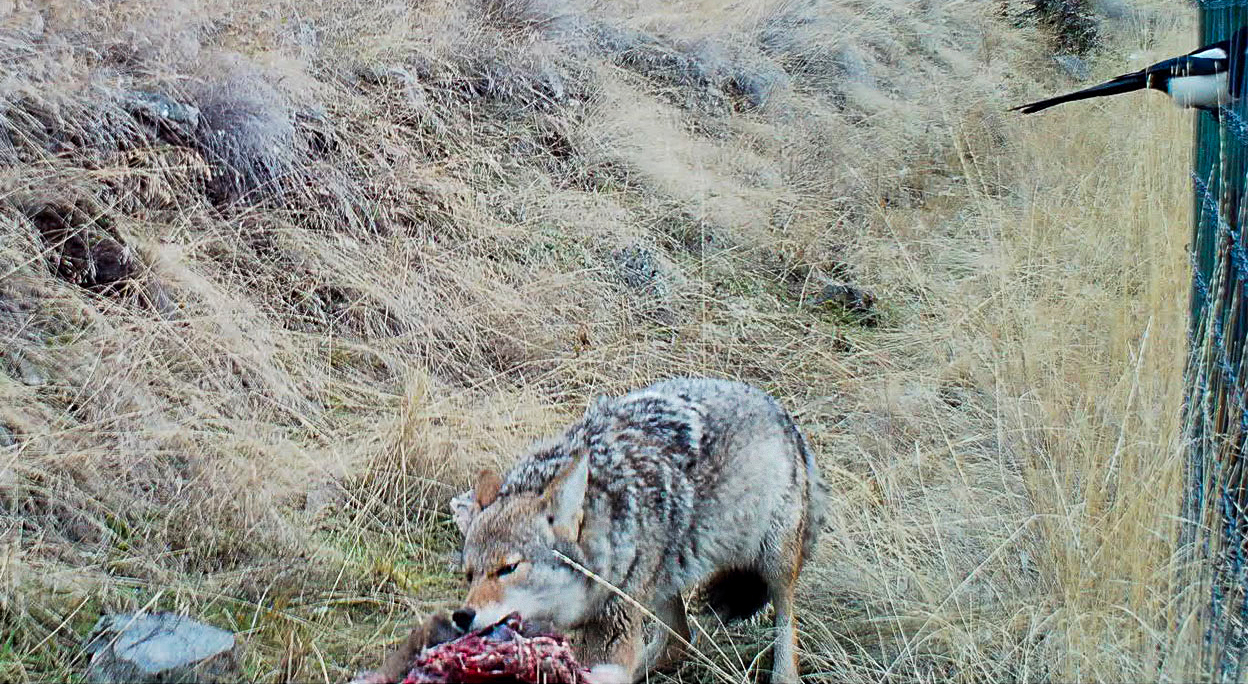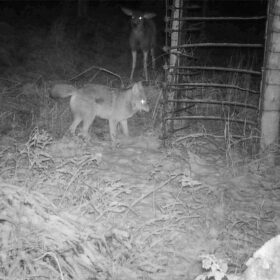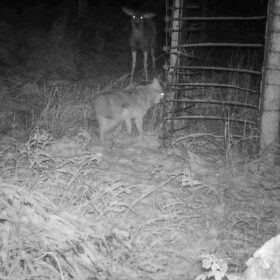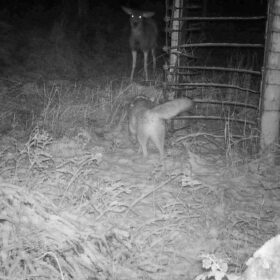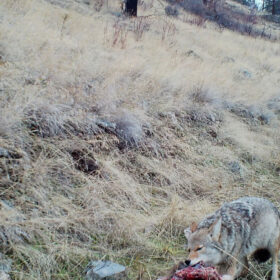Conservation, Highway 97 Mortalities
The Wall of Death: How a Highway Fence Created a Killing Field for Deer
On a cold January morning, as darkness consumed the frost-covered ground, a haunting scene unfolded along a busy stretch of highway 97 in British Columbia. A trail camera, positioned near a highway fence, captured an interaction that epitomizes the harsh realities of life in the wild—a lone mule deer, cornered by a cunning coyote, becomes prey in a brutal struggle for survival.
The Grim Efficiency of Coyotes
Coyotes, nature’s opportunists, are adapting to a peculiar feature of their environment: the highway fence. These fences, originally intended to reduce wildlife-vehicle collisions, have unintentionally created a predator’s paradise. The images from January 8, 2025, reveal how coyotes are using these barriers to their advantage, corralling mule deer into a deadly bottleneck. The fence acts as a silent accomplice, limiting the deer’s ability to escape while predators strategize their kill.
The photo series shows the mule deer hesitating near the fence, eyes glowing in the darkness, its breath visible in the freezing air. Its posture and proximity to the predator indicate that death looms. In the foreground, the coyote—small, agile, and determined—closes in. Later, another image from a secondary camera shows the gruesome aftermath: a coyote feeding on the remains of its prey. What you’re seeing is confirmed deer mortality #255 since the team started tracking deaths along the fence line in February 2023.
From Highway Fence to Killing Floor
This stretch of fence has become what researchers and conservationists are now calling a “killing floor” for deer. The unintended consequences of such barriers highlight a critical imbalance in the ecosystem. Predators like coyotes are thriving, while prey populations, such as mule deer, are facing increasing pressure. The imbalance is further exacerbated by limited migration routes, habitat fragmentation, and a lack of natural escape mechanisms for the prey.
A Call to Action: Hunters for BC’s Study
Recognizing the severity of this issue, Hunters for BC has launched a study to monitor the interaction between deer and coyotes along this fenceline. The project seeks to understand the long-term impacts of these predatory behaviours on mule deer populations and to propose mitigation strategies to protect this iconic species.
Possible solutions include redesigning sections of the fence to allow safe passage for deer or implementing deterrents to reduce predation near these choke points. However, the task is complex, requiring a balance between human safety, ecological sustainability, and wildlife conservation.
Why This Study Matters
Mule deer are a cornerstone species in British Columbia’s ecosystems. Their continued decline could ripple through the food chain, impacting predators and vegetation dynamics alike. The haunting images from these trail cameras are more than just snapshots of nature; they are a call to reexamine how human interventions, even well-meaning ones, can reshape the natural world in unintended ways.
How You Can Help
As the study progresses, the hope is that these silent witnesses—the trail cameras—will not only document the problem but also inform a solution, ensuring that the balance of life along this highway can be restored.
For more details about this project and to follow ongoing research efforts, visit the Hunters for BC project page: Highway Fence Mule Deer Monitoring. To support our program please consider becoming a member of H4BC or donating a camera to this project.
Let these images remind us: in the wild, every decision we make changes the course of nature and leaves an indelible mark.

